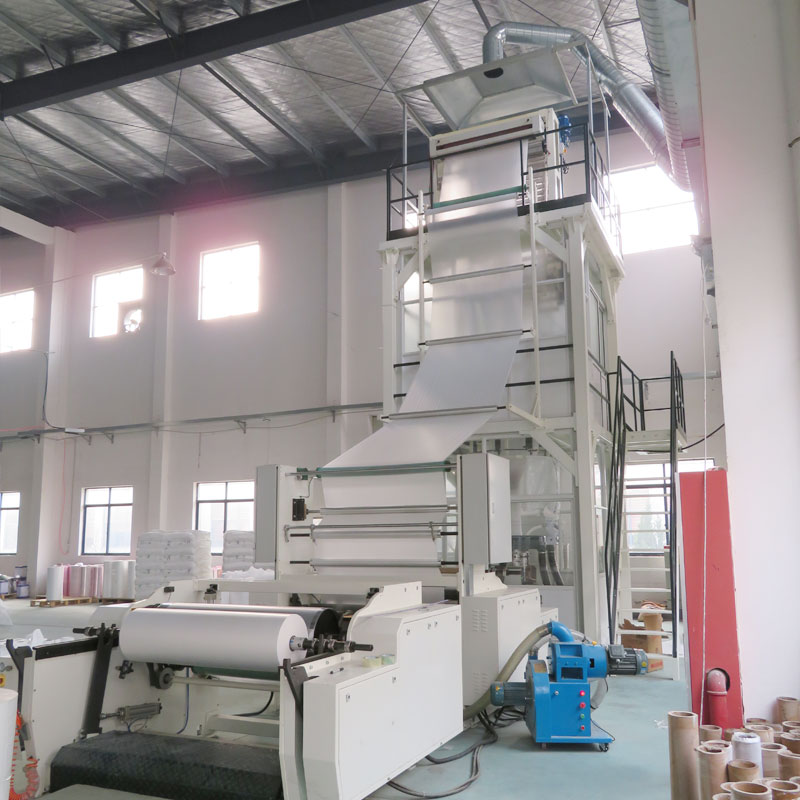Single Layer Blown Film: An Introduction to Flexible Packaging Solutions
2025-04-29
In the world of packaging, flexibility, durability, and cost-effectiveness are key factors. One of the most widely used methods for producing flexible packaging materials is single-layer blown film technology. This process creates films that are used in a variety of products such as shopping bags, food packaging, industrial liners, and more. But what exactly is single-layer blown film, and why is it so important? Let’s dive into it!

What is Single Layer Blown Film?
Single layer blown film refers to the process of creating a plastic film that is made from a single layer of material. The process involves extruding plastic resin into a thin film, which is then inflated and cooled to form a bubble-like structure. This film can be used in various industries for packaging purposes due to its versatility and strength.
The single layer refers to the fact that only one type of polymer or resin is used in the extrusion process. It contrasts with multi-layer blown film, where different materials are combined to enhance the properties of the film, such as adding barrier layers for moisture or oxygen.
The Blown Film Extrusion Process
The process begins by melting the raw plastic resin (often polyethylene, polypropylene, or PVC) and feeding it into an extruder. The extruder pushes the melted plastic through a circular die, forming a thin tube. The tube is then inflated with air, which forms a bubble that expands and elongates.
The film is cooled as it is pulled upward, and it is finally wound onto rolls for further processing. The unique feature of blown film extrusion is the formation of the bubble, which gives the film its strength, clarity, and stretchability.
Why Choose Single Layer Blown Film?
Single-layer blown film offers several key advantages, making it a popular choice for a wide range of applications:
1. Cost-Effective
Since single-layer films use only one type of resin, they are generally more affordable to produce compared to multi-layer films, which require additional materials and more complex processing. This makes single-layer blown film a more economical option for manufacturers, particularly when the required film properties do not necessitate multiple layers.
2. High Clarity and Strength
Single-layer films often have high clarity, making them ideal for applications where product visibility is important, such as food packaging. The blown film process itself imparts strength and tear resistance to the film, which can be critical for handling and transportation.
3. Flexibility in Use
Single-layer blown films are highly versatile. They can be used in a variety of industries, from packaging food and pharmaceuticals to being used in industrial applications such as liners and protective covers. The film can be printed on, heat-sealed, and easily converted into bags, pouches, and wraps.
4. Excellent Barrier Properties
Depending on the material used, single-layer films can offer a certain level of barrier protection against moisture, dust, and dirt. For example, low-density polyethylene (LDPE) and high-density polyethylene (HDPE) films can provide adequate moisture barriers for a variety of applications, although not as strong as multi-layer films.
5. Environmental Impact
Single-layer films, especially those made from recyclable plastics like HDPE and LDPE, can be more environmentally friendly than multi-layer alternatives. Since they consist of a single material, they are easier to recycle and have a lower environmental footprint compared to films that require multiple layers of different polymers.
Applications of Single Layer Blown Film
Single-layer blown films are used in a wide range of industries and applications:
1. Food Packaging
One of the most common uses for single-layer blown films is food packaging. The films are used to wrap items such as fruits, vegetables, snacks, and bakery products. The flexibility and moisture barrier properties of single-layer films ensure that food products stay fresh during transport and storage. Additionally, these films are often used for customized food bags and pouches.
2. Retail Bags
Single-layer blown films are often used in the production of shopping bags and retail packaging. These bags are lightweight, durable, and customizable with printed branding. From small grocery bags to larger retail shopping bags, single-layer films provide a cost-effective solution for retailers.
3. Industrial Packaging
In the industrial sector, single-layer blown films are used for protective wraps, liners, and coverings for equipment and products. They offer strength and durability, making them ideal for protecting goods during shipping and storage.
4. Disposable Products
The disposables market also makes extensive use of single-layer films. From plastic wraps to trash bags and medical packaging, these films are lightweight, affordable, and easy to manufacture in bulk, making them ideal for one-time use applications.
5. Agricultural Use
Single-layer blown films are often used in agriculture for applications such as greenhouse covers, mulch films, and plant protection. The films help regulate temperature, moisture, and light for plants, contributing to increased agricultural productivity.
Advantages Over Multi-Layer Films
While multi-layer films offer advanced features like multi-barrier properties (such as added resistance to oxygen, moisture, and UV rays), single-layer blown films have their own set of distinct advantages:
- Simplicity: Single-layer films are less complex to produce, which results in lower production costs and a faster manufacturing time.
- Lightweight: These films tend to be lighter, which can lower shipping costs and make handling easier.
- Recyclability: Being made from one type of polymer, they are easier to recycle than multi-layer films that often require separation of materials before recycling.
Challenges of Single Layer Blown Film
While there are many benefits to using single-layer blown films, there are some limitations:
- Limited Barrier Protection: Single-layer films may not offer the same level of protection against oxygen, moisture, or UV light as multi-layer films, which makes them less suitable for packaging items that require long-term preservation.
- Limited Customization: With only one material layer, the ability to customize the film’s properties (such as adding more strength or barrier protection) is somewhat limited compared to multi-layer films, which can combine several materials for specialized functions.
The Future of Single Layer Blown Film
The future of single-layer blown film looks promising as demand for sustainable, cost-effective packaging solutions continues to grow. As plastic film technology advances, we can expect improvements in the strength and barrier properties of single-layer films, making them even more versatile and efficient. Additionally, the increasing emphasis on recyclability and environmental responsibility may lead to new innovations in single-layer film production, especially with the rise of biodegradable plastics and sustainable materials.
Conclusion
Single-layer blown films remain a cornerstone of the packaging industry, offering a cost-effective, versatile, and environmentally friendly solution for a wide range of applications. Whether used for food packaging, retail bags, or industrial covers, these films continue to provide manufacturers and consumers with an accessible option for their packaging needs.
As the world pushes toward sustainability, single-layer blown films are likely to evolve and meet the changing demands of modern industries. Their simplicity, durability, and recyclability will continue to make them a valuable resource in the future of packaging.


